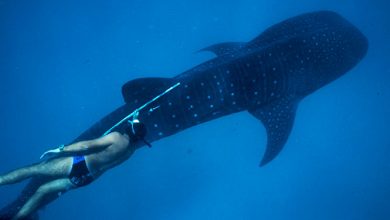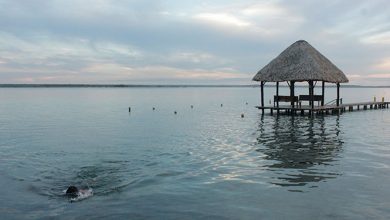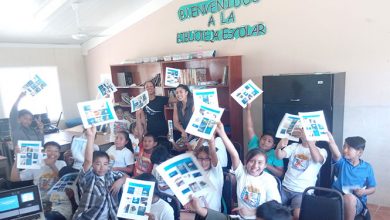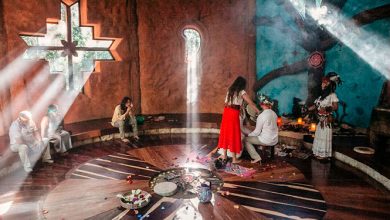Diving Caverns and Caves
Scuba divers from around the world travel to the Yucatan Peninsula to dive in our extensive network of caverns and caves. We spoke with Roman from Vida Aquatica Dive Center to learn about the difference between cavern diving and cave diving and what makes it all so appealing.
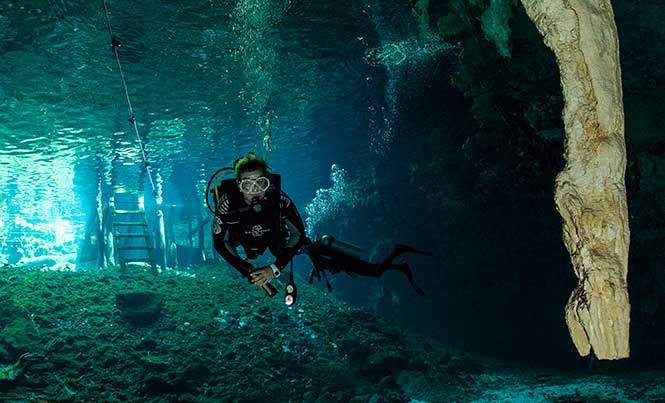
 The Yucatan Peninsula has the most extensive network of cenotes and underwater caves in the world. This has made the area an internationally renowned location for cavern and cave diving. Important discoveries have been made in the Yucatan Peninsula thanks to cave divers, including the 13,000-year-old human remains found a few years ago in Hoyo Negro.
The Yucatan Peninsula has the most extensive network of cenotes and underwater caves in the world. This has made the area an internationally renowned location for cavern and cave diving. Important discoveries have been made in the Yucatan Peninsula thanks to cave divers, including the 13,000-year-old human remains found a few years ago in Hoyo Negro.
We sat down with Roman from Vida Aquatica Dive Center to find out more, including what is the draw to the cenotes, caverns, and caves for divers.
What is the difference between cavern diving and cave diving?
To cavern dive, you must be an open water certified diver, and you can only dive with a guide. The parameters for cavern diving state that natural daylight from the sun is visible. The maximum penetration is 130 feet, and the maximum depth in an overhead environment is 70 feet or 21 meters. We never dive restrictions in cavern diving (no narrow tunnels). You always need space for two divers to pass side by side (in case you need to share air). Minimum visibility is 40 feet (12 meters). There is a maximum of four divers per dive guide.
There is a cavern diver course, which can be completed after your advanced course. Some cenotes, like Gran Cenote, are requiring that divers have their cavern certification to dive there and as always they must be with a guide. They will ask for your official dive card or certificate.
In cave diving, there are three levels of courses you must take (since cave divers will penetrate well beyond the parameters of cavern diving). The first is the cavern course. The second is the introduction to cave diving course, and the final is the full cave course. Once you are certified as a cave diver, you can enter the caves. A full cave diver can do circuits, jumps, compression dives and so on. The full cave course is eight days with 16 dives minimum and is for a more advanced diver who has excellent buoyancy control. It is recommended that you have at least 100 dives.
Cave diving is only for those who are properly trained and follow standard procedures. Cavern diving means following and staying on the cavern line, so you don’t get lost.
 What are some of the more popular cenotes for diving in the Riviera Maya?
What are some of the more popular cenotes for diving in the Riviera Maya?
Chikin Ha, Chac Mool, Jardin del Eden (aka Ponderosa), Taj Mahal, Dos Ojos, The Pit (at Dos Ojos), Temple of Doom, Car Wash, Angelita, and Dreamgate. Dreamgate is a little more advanced because it’s a more delicate cave. We only bring people there when we they have dived with us, and we know they have good buoyancy control.
What is your favorite cenote to guide?
It depends on the day and the season. I like them all because each one has their own formations, color, and character. Now, in midsummer, we have light beams in the air domes. One of my favorites to see light beams is Taj Mahal – it´s super nice. I also like Chac Mool.
Have you ever had an emergency or someone panic?
I´ve never had an emergency, but divers have felt uncomfortable and aborted the dive. Most of the time it’s at the beginning of the dive. They go down, and they realize it’s not for them. The Golden rule for cavern and cave diving is anyone can call the dive at any time, without question.
Getting back to cave diving, how long have you been cave diving?
17 years. I got certified here in Mexico. I dove the cenotes first, and then I wanted to do the course. I wanted to go far. I wanted to go beyond the signs and see what was there. (Editor’s Note: When you are diving in the caverns, you will see Do Not Enter signs at the entrances of the caves).
What kind of special equipment do cave divers use?
 We use a redundant system. That means double tanks connected with a manifold, two first stages, two second stages – one with a seven foot long. Other required equipment includes a primary light, two backup lights (because you will have no natural daylight from the sun), a line-cutting device, spare mask, a dive computer, a second timing device (watch or dive computer), reels, and markers. Depending on the dive you’re doing, you may need additional tanks or mixed breathing gases.
We use a redundant system. That means double tanks connected with a manifold, two first stages, two second stages – one with a seven foot long. Other required equipment includes a primary light, two backup lights (because you will have no natural daylight from the sun), a line-cutting device, spare mask, a dive computer, a second timing device (watch or dive computer), reels, and markers. Depending on the dive you’re doing, you may need additional tanks or mixed breathing gases.
What do you like about cave diving?
The quiet environment – no noise, no boats. I hear my heartbeat and my bubbles. It´s super peaceful. It´s a little bit of yoga. But I’m aware, very aware. The greatest thing about cave diving is when you are making your way out of a cave, and you see the blue light. It starts as a pinhead and then it opens up more and more. This is always my favorite thing.
How much more is left to be explored?
That´s a good question. Local cave divers continue to explore passages in known caves and look for new cenotes. It´s getting more difficult because (the area left to be explored) is more remote. But even in the main caves here, people find some new passages.
What are some of the cool things you’ve seen in the caves?
The formations (stalactites and stalagmites) or sometimes you go from narrow tunnels and then it opens up into a big room, like at Chinese Gardens. There is the Blue Abyss, which is actually a sinkhole within a cave, so we squeeze through some narrow passages, and it opens into a very large area. Then, you see this fantastic blue, and it goes down about 75 meters.
It is important to note: Accidents have happened here. Divers without the appropriate training can and have died in the caves. It is incredibly important that if you are not a certified cave diver, you should never, under any circumstance enter a cave.
For more information about the cave systems here in Quintana Roo, visit the Quintana Roo Speleological Survey at caves.org/project/qrss. If you’re interested in diving with Roman and the team from Vida Aquatica Dive Center in the visit http://www.vidaaquatica.com/.



